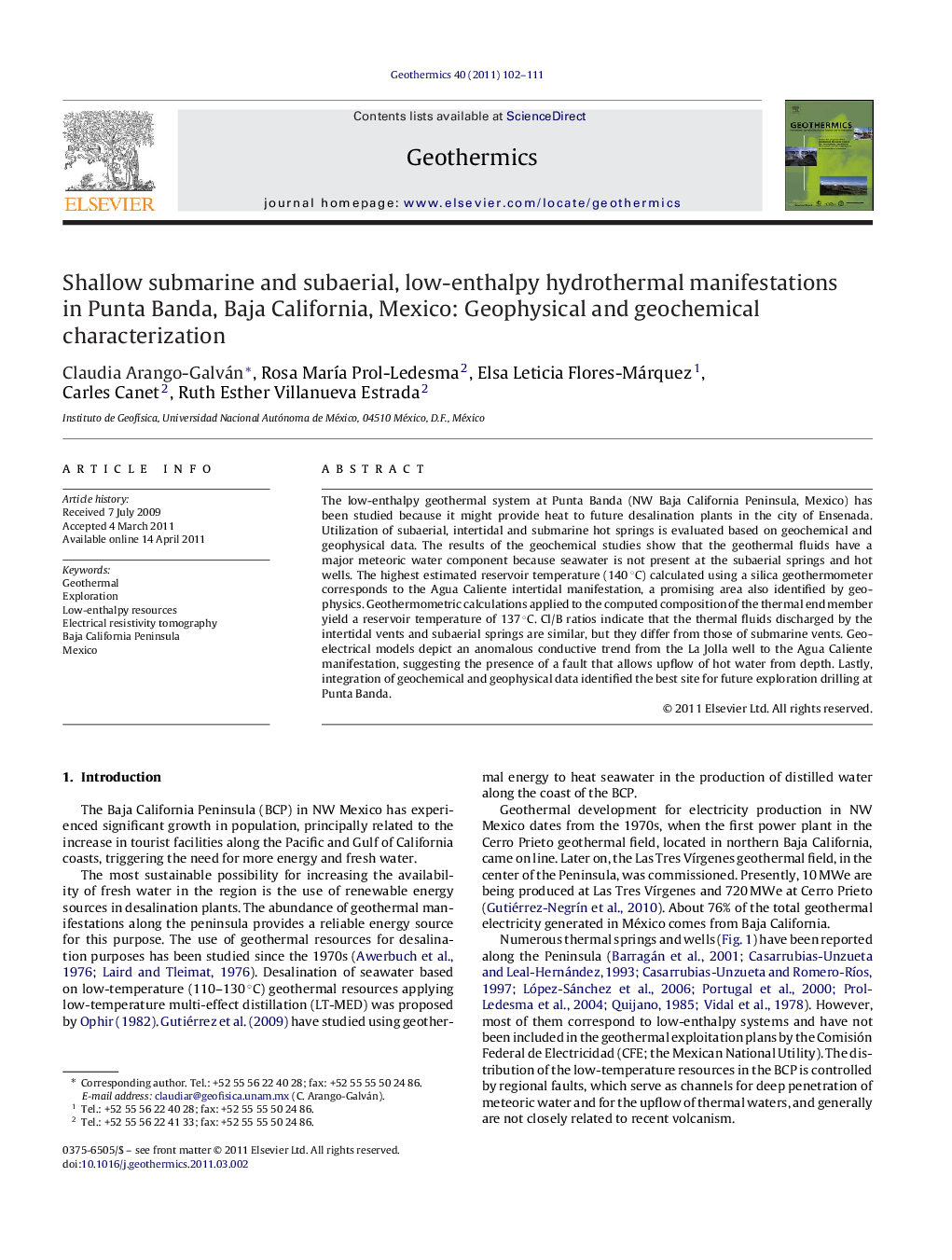| Article ID | Journal | Published Year | Pages | File Type |
|---|---|---|---|---|
| 1742618 | Geothermics | 2011 | 10 Pages |
The low-enthalpy geothermal system at Punta Banda (NW Baja California Peninsula, Mexico) has been studied because it might provide heat to future desalination plants in the city of Ensenada. Utilization of subaerial, intertidal and submarine hot springs is evaluated based on geochemical and geophysical data. The results of the geochemical studies show that the geothermal fluids have a major meteoric water component because seawater is not present at the subaerial springs and hot wells. The highest estimated reservoir temperature (140 °C) calculated using a silica geothermometer corresponds to the Agua Caliente intertidal manifestation, a promising area also identified by geophysics. Geothermometric calculations applied to the computed composition of the thermal end member yield a reservoir temperature of 137 °C. Cl/B ratios indicate that the thermal fluids discharged by the intertidal vents and subaerial springs are similar, but they differ from those of submarine vents. Geoelectrical models depict an anomalous conductive trend from the La Jolla well to the Agua Caliente manifestation, suggesting the presence of a fault that allows upflow of hot water from depth. Lastly, integration of geochemical and geophysical data identified the best site for future exploration drilling at Punta Banda.
► A study was conducted in low-enthalpy geothermal system at Punta Banda, Mexico. ► Geothermal manifestations were evaluated using geochemistry and geophysics. ► Geochemistry points out an anomalously high silica temperature in manifestations. ► Electrical resistivity images show thermal anomalies related to a structural feature. ► Data integration allowed spotting the best site for future exploration drilling.
